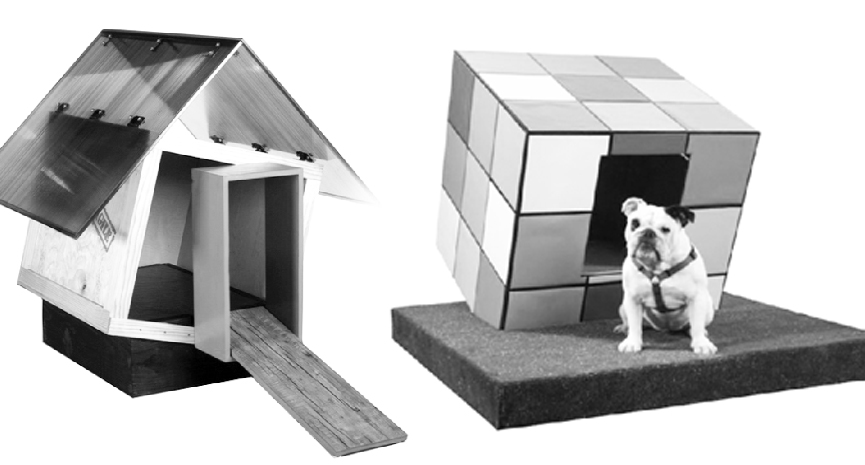Dog-houses and bird-houses have always made Architects somewhat uneasy. They are strange products and additionally strange terms. What does “house” mean to a bird or a dog? Moreover, what business do we have building homes for another species? What determines the correct design parameters for another animal–i.e. if you could interview a canine or avian client, what would they require in their so-called house? More light? A better view? Perhaps, like most humans in America, they mainly want more closet space.
Of course, there are some specific design criteria that will determine the success and failure of an animal habitat (size of entrance, protection from heat and cold, protection from predators), but overall, will your dog prefer a gabled roof, or a flat roof? Does the local blue-jay like white or red exterior paint on his feeder? Does it matter? Probably not. So when we speak of a dog-house, what are we really talking about? And more generally, when we speak of architecture and animals and architecture for or by animals, what can-of-worms are we opening (figuratively, though maybe also literally, speaking)?
Most basically, animal architecture is interested in answering two questions: “What does architecture mean to another species?” and “How does that understanding shape our own human architectural practice?” We go about investigating these questions by examining the field of cross-species design. One can find projects online that seeks to reinvent our own sense of humanity and reinterpret the way we humans interact with our companion species.
True, there’s an underlying utopian view to many animal architecture projects. And there’s also no denying that the urge to romanticize the past, when humans lived in a closer relationship to other animals, is very strong in many of the projects. But overall, the vast majority present a kind of alternate-reality or near-reality world-view. The projects suggest that not much of our world would need to be altered to effect significant positive change in the lives and habitats of our eco-cohorts.
There are design strategies that can serve as inspiration for architectural endeavors, but our interests lie in the benefits of partnering and co-opting the design practices of our cohabitor species, exploring resilient structural systems, redefining sustainability, and looking at soft-systems of cohabitation. There are some symbiotic health benefits as well: mosquito-eating bats keep malaria at bay; bees that pollinate crops increase urban agriculture yields; and urban predators (owls, eagles, and hawks) keep other smaller rodent animal populations in check without chemical or mechanical means.
But largely, the work of animal architecture is about recognizing that we are not alone in the world. This planet is not only ours–the lives of billions of other animals are entwined with our own story. As global resources for much of life–water, food, and clean air–become more scarce an attitude of “we’re all in this together” might do us some good. Ethically, the message is about coexistence and tolerance; in practice, it’s about expanding “architecture” to no longer address only one species of life, but to encompass the global needs of the humanimal population.





